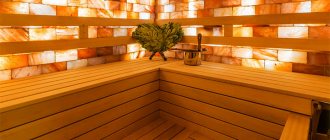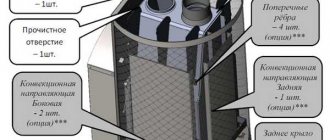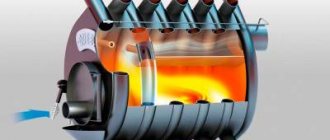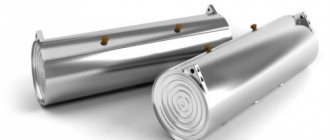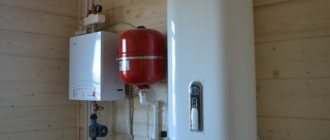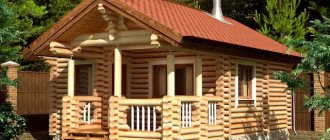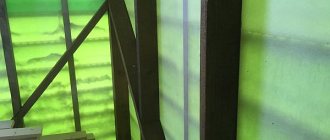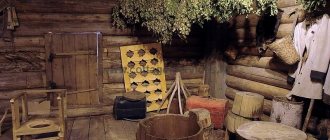Stones for baths and saunas Dunit, 20 kg. Photo by Leroy Merlin
Dunit has been popular since it began to be sold for baths. This made it famous and, at the same time, raised questions related to its properties. Unfortunately, geologists are in no hurry to talk about the beneficial properties and contraindications of the dunit stone for a bath, and if someone else takes on this, for example, secret scholars, then the information becomes basically unverifiable .
verifiable facts , reference data and the like. And there is so much everything else on the Internet that it won’t be difficult to find.
By the way, if you want to learn more about what dunite is outside the context of bath use, we recommend reading our article about its origin and properties.
Application
Where can dunite stone be used:
- Most often used as a breed for laying in a steam room.
- Acts as a facing material in ovens.
- Can act as a fertilizer when planting potatoes.
- In combination with clay, it acts as a refractory material for laying out stoves in bathhouses.
- It is an ornamental stone.
- As a floor covering with an anti-slip surface.
- In the manufacture of heat-resistant ceramics.
This mineral is not used in construction.
How to distinguish an original from a fake
The green serpentinite ornamental stone is not very expensive, so it is very rarely counterfeited. Nevertheless, there are also those who try to pass off a tinted piece of plastic as a coil. Therefore, if you intend to buy jewelry or some kind of craft made from this stone, remember some signs by which the original can be distinguished from a fake:
- Try to estimate the weight of the stone. If it is very light, then it is a plastic fake.
- Look carefully at the color of the stone. If it is uniform, and the pattern is very “correct,” then this means that this is a fake. Chaotic stains, stripes and inclusions are visible on the surface of natural stone.
- Hold the stone in your palms for a couple of minutes. Real serpentinite will remain cold, while the fake will heat up.
- Squeeze the product tightly in your hand. A real stone should feel a slight tingling sensation.
Properties
Dunite is considered one of the ideal minerals for baths. It belongs to the olivinite-dunite family, a class of ultrabasic, plutonic rocks.
Origin
A mineral such as dunite is formed much below the earth's crust at the level of the upper mantle. In the process of gradual cooling of magma at the beginning of crystallization and differentiation of lava, this rock is formed. It is usually found in deep caves, where it accumulates due to the displacement of plates during tectonic processes.
Chemical composition
The mineral contains practically no volatile substances. It is based on various oxides. Their percentages are:
- SiO₂ 35-40%;
- MgO 38-50%;
- FeO 3-6%;
- Fe₂O₃ 0.5-7%;
- Al₂O₃ up to 2.5%;
- CaO up to 1.5%;
- Na₂O up to 0.3%;
- K₂O up to 0.25%;
- TiO₂ up to 0.02%.
Mineral composition
Most of the composition of dunite - about 90% (sometimes more) belongs to the mineral olivine. It also includes chromite, pyroxenes and, in rare cases, hornblende. The mineral has a medium or fine-grained structure. Under the influence of hot underground waters and weathering, serpentinization begins, as a result of which it becomes another mineral - serpentine.
Dunite color
Dunite stone can be of different colors, up to very light or deep dark tones, even black. The most common option is various shades of green. In structure it is a completely opaque stone.
Spreading
There are dunite deposits in different places around the globe. In Russia, it can be found in the Caucasus, the Baikal region and the Northern Urals. Also on the continent you can find this breed in Ukraine and in the countries of Central Asia.
Physical and mechanical properties
List of physical and mechanical properties of the mineral:
- Retains its shape when heated or wet.
- Refractory stone with a low coefficient of linear expansion when heated.
- Thermal conductivity coefficient is 1.1-1.9 W/m*K.
- Specific heat capacity 0.6-0.8 kJ/kg*K.
- Thermal diffusivity coefficient is 7.1-8.5 m2/s.
- Density 3280 kg/m2.
Types of stones for baths
Let's start with a simple division: some steamers simply pick up stones, others pay money for them. Let's start with the first category.
So what can you bring home for free? Firstly, natural stones, secondly, artificial materials. Of the latter, they most often look for and bring broken power line insulators. Well, someone can look for suitable hardware - stainless steel or cast iron (although the latter is not suitable for any brand). This means that natural stones remain.
Usually they are looked for either in a field or on the bank of a river (preferably a mountain one). Since it is impossible to predict which stones will be found in a particular area, suitable samples have to be selected at random.
IMPORTANT! It is desirable that the selected stones are strong, do not break when hit by a 5-kilogram sledgehammer, and the sound is clear, as if hitting metal. It is better to have smaller crystalline grains, so much so that the texture appears uniform
It is usually advised to heat the brought samples over a fire and then throw them into a bucket of water.
IMPORTANT! We do not recommend picking up granite fragments - they are not suitable for your purposes. As for purchased stones, the names are usually written on the boxes and buckets
True, it often happens that sellers deceive, they put the wrong stones that are written on the label, so you need to be able to distinguish between a good, correct stone and a low-quality one, or something else altogether. You can read some tips below.
As for purchased stones, the names are usually written on the boxes and buckets. True, it often happens that sellers deceive, they put the wrong stones that are written on the label, so you need to be able to distinguish between a good, correct stone and a low-quality one, or something else altogether. You will read some tips below.
The most expensive are semi-precious stones, which, of course, do not end up in the bathhouse in jewelry quality. These are jade, jadeite and jasper. The choice of the latter is not entirely clear, because in essence, this is the same quartzite in composition, it is better to take crimson quartzite - it will cost less and is more beautiful than brown jasper.
The cheapest would be gabbro-diabase - it has good characteristics, but there is a lot of it, and it is often used in construction, for laying roads, for example. In a quarry, it costs pennies (other stones are also 50 times cheaper if you take them from a quarry).
All the others, which you will soon meet, are in the middle price category, some a little more expensive, others cheaper. Chromite is still a strategic raw material, so it's hard to say what traders are actually offering.
In addition to natural fillers for heaters, you can also find artificial ones on sale - these are ceramic balls, cast iron balls, the same power line insulators, if you buy them from the factory, stainless steel balls. In general, metal or ceramics. Often they are taken to be mixed with stone, improving heat transfer or protecting the upper layers from the destructive effects of fire.
Advantages and disadvantages
The mineral rock dunite has both pros and cons. Among its positive qualities:
- the ability to heat up quickly, conduct heat well and not expand in the process. Heat is also released evenly;
- fire resistance – the ability to withstand temperatures up to 1200 degrees and not crack during operation;
- does not emit odors when heated;
- improves the condition of hair and skin, restores the functioning of the musculoskeletal and nervous systems;
- reacts with carbon dioxide, thereby preventing poisoning in the steam room.
But the stone also has the following disadvantages:
- short service life of about 5-6 years;
- unattractive appearance due to the scarcity and dullness of the color scheme;
- there are a large number of fakes;
- most often you can find small stones;
- There are rocks interspersed with sulfur, which, due to elevated temperatures and humidity, turns into hydrogen sulfide acid.
Igneous rocks
Dunite belongs to the igneous rocks. Igneous rocks are the result of crystallization of molten magma. The class of rocks depends on the depth at which magma solidifies and the process of its crystallization occurs.
There are three classes of rock division: plutonic, volcanic and hypabyssal.
Plutonic and volcanic rocks are used in the stone backfill of the sauna stove.
But the division and classification of breeds does not end there. Plutonic and volcanic rocks are divided into four groups based on their silica content.
These are: ultrabasic, basic, medium and acidic. Ultrabasic rocks contain from 30 to 45%, basic rocks from 45 to 53% silica.
Olivinites-dunites belong to ultrabasic plutonic rocks.
Consequently, dunites contain a minimal amount of silica, which is good for a sauna stove. Less unnecessary waste.
How to choose the right dunit for a bath?
Although dunite is considered an inexpensive rock, sometimes you can stumble upon crafts or alternative minerals. Clinopyroxenite and serpentinite are often sold under the guise of dunite. They are not suitable for use in a heater, as they are not able to retain heat for a long time.
In order not to make a mistake in choosing to buy real dunite, you can use the following tips:
- Scratch the surface of the stone with a sharp object. The scratch will remain on the serpentinite.
- The stones should be free of small spots and veins of golden, gray or yellow hue. These are sulfur harmful inclusions.
- Stones can be tested for strength by simply hitting them with a hammer. They should not crack or crumble.
- You need to buy stones that are dense, durable, without defects or cracks. Otherwise, they will not last long and will quickly deteriorate.
Characteristics for the right choice
How not to buy serpentinite instead of dunite
But you should still know the following: it is a rare guest on the daytime surface that blows. It may be affected by a tectonic shift or displacement, but if this happened long enough, then most likely it was exposed to hot water with substances dissolved in it, as a result of which its mineral composition changed .
This process is called serpentinization. This is how serpentinite is obtained from dunite . And this affects its hardness and strength. The fact is that serpentinite or coils are not placed in the heater at all. It is not suitable for these purposes. Unless they make a stove lining out of it, and even then for its aesthetic appeal.
Stones for baths and saunas blow. Photo by Leroy Merlin
The bad news: dunite and serpentinite are similar in appearance , and if you don’t check the stones in the box, they can easily sell you serpentinite. And it doesn’t even have malicious intent - they are adjacent to each other in the same field.
Why is serpentinite bad? Not only is it inferior in hardness, but it is also prone to cracking easily and is full of microcracks.
The good news: you can distinguish it by the way the stones offered to you are scratched with an ordinary steel knife , and by the way they react to a blow with a hammer . A real dunite doesn't care about a knife or a hammer - it won't be scratched or cracked with one blow. And serpentinite will scratch easily and split.
So take a knife and a hammer with you when going to a bath accessories store. Sellers should be sensitive to this
